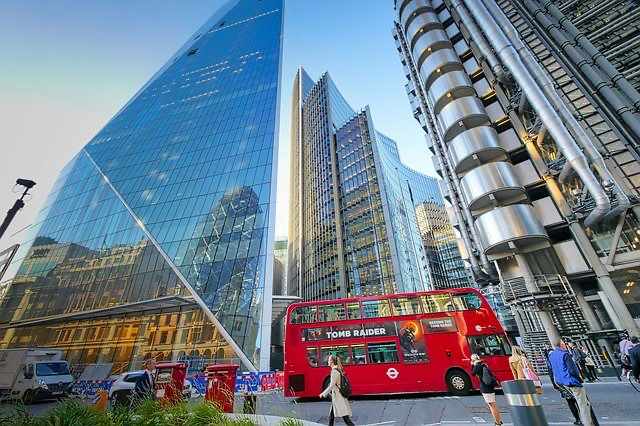London market ILS platform still seen as lagging: LMG report

While the London insurance and reinsurance market has been growing it is being outpaced by other markets and insurance-linked securities (ILS) is again highlighted as an area of opportunity where results have lagged ambitions and there remains work to do, the London Market Group’s latest report makes clear.
While London and the United Kingdom spent an enormous amount of time, effort and cost in producing an insurance-linked securities (ILS) regulatory regime, the amount of activity seen has not lived up to expectations.
With the London insurance and reinsurance market still seen as world-leading, in specialty, reinsurance and many lines of business, it seems the inability to grasp the ILS opportunity is still bugging executives and industry leaders.
The London market has increased its contribution to the UK economy by 26% since 2020, now accounting for 2% of GDP, the London Market Group (LMG) explained.
It remains the world’s largest specialty insurance market, at almost twice the size of its nearest competitor and earns $160 billion in income every year with almost three-quarters of that coming from overseas.
As a share of the global re/insurance market, London now has 8.3%, up slightly from 7.6% in 2020, the LMG notes.
Which is all very positive and testament both to London remaining an attractive centre for international business, as well as the high-levels of expertise and service available to businesses operating there.
Of course, Lloyd’s remains a significant draw too, being the most concentrated hub of specialty re/insurance underwriting expertise in the world.
But, growth has been faster in other marketplaces, such as Bermuda and this bothers executives in the UK.
Between 2020 and 2022, the London Market grew by 32% but Bermuda saw growth of 39%.
Sean McGovern, Chair of the London Market Group, explained, “Although the London Market remains the largest hub of direct insurance and reinsurance when compared to other centres, its rate of growth has been slower than some of its key competitors and over the last decade its market share has remained broadly stagnant. So, we cannot take our place in the world for granted.
“London has historically been a hub of innovation, developing market-leading solutions in areas like cyber. As domestic markets develop their own solutions, however, business tends to migrate from London. To maintain its status, London needs to continue to drive new product innovation in areas like green technology and to ensure it can offer the full range of risk transfer tools.”
While London has done an excellent job of dominating certain areas of specialty re/insurance over the years, where it has perhaps slipped in stature over the last three decades is in the introduction of capital to the marketplace and in offering risk transfer alternatives.
McGovern noted that, ““To continue to punch above our weight there is an urgent need to create a regulatory environment that facilitates UK domiciled captives, demonstrating both at home and abroad that the market can respond swiftly and effectively.”
The captive market is seen as a $161 billion opportunity by 2023, of which London currently takes zero.
On insurance-linked securities (ILS) specifically, while Lloyd’s has made impressive headway and progress with its London Bridge ILS offering, the LMG report highlights the area of alternative capital as one still needing work.
“There are perceived challenges with the efficiency of issuing London based alternative capital instruments (ILS in particular),” the LMG’s report explains.
It’s now almost seven years since the UK ILS regulatory regime was put into place, but the work to implement it began almost nine years ago.
Since then activity has been limited, although in the last couple of years Lloyd’s has started to attract more use of its London Bridge platform.
The LMG has criticised regulators that the ILS platform remains too slow and isn’t as easy to use as other ILS domiciles, with Bermuda still the market-leader, Singapore growing much faster than the UK has seen, and even Hong Kong now outpacing the UK for catastrophe bond activity.
The LMG’s report also notes that, “the London Bridge 2 offering needs further acceleration to increase capacity beyond its c.$2bn in 2024.”
Cyber risk is seen as an area of potential opportunity for London’s ILS market, although the earliest cyber catastrophe bond deals have all come out of Bermuda, including the second PoleStar Re that Beazley has just sponsored.
Of course, Beazley did opt for London for its first natural catastrophe bond, which was issued using Lloyd’s London Bridge 2 PCC vehicle.
The LMG calls for “frictionless support from the government at each stage of the participant company lifecycle” to help London retain its international competitiveness.
Adding, “To support the start-up and launch of companies in London, approval processes should be streamlined (e.g. the Senior Managers Regime) and the UK’s insurance-related tax regime should be reviewed.”
The government also needs to continue, “to engage with industry to widen capital markets access via ILS.”
What London needs to see is ILS activity using its special purpose reinsurance structure and newly established PCC’s.
Lloyd’s London Bridge is a wonderful facility for that market and for those looking to channel capital to underwriters there, but for the UK and London to call its ILS platform a success it needs to see new structures formed, outside of Lloyd’s, that enable direct risk transfer with institutional capital markets around the world.






